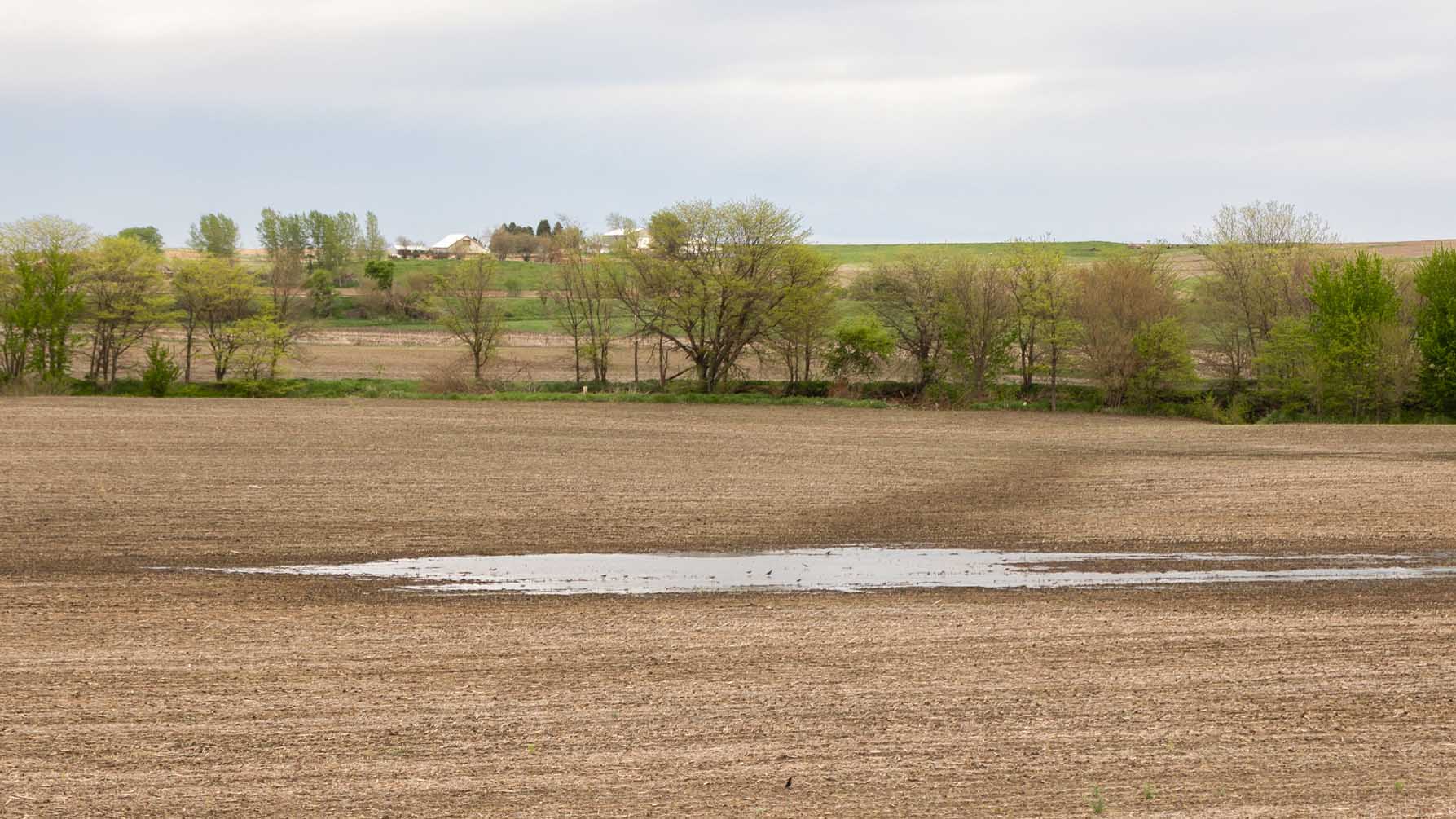
Photo: Iowa Soybean Association/Joclyn Bushman
Replant and delayed planting weighing on farmers’ minds
May 16, 2024 | Kriss Nelson
Replant and delayed planting weighing on farmers’ minds
Whether it is replanting or concerns of not being able to get a crop in the ground, the excessive rainfall this spring may have producers considering their options under their multi-peril crop insurance coverage.
Pat Swanson, Iowa Soybean Association District 9 director, farmer and co-owner of Son Risk Management from Ottumwa, offers this advice to help farmers navigate their options during this uncertain time.
Replant
Replant the same crop
If replanting is necessary, replant coverage under your multi-peril coverage means replanting to the same crop.
“That means if you planted soybeans, you are replanting soybeans. If you planted corn, and it is getting late enough you think you need to put soybeans into that field, that is not a replant claim; that is another scenario called first crop, second crop,” says Swanson.
Call your agent
A claim must be turned in to your insurance company before you can start replanting.
“That is probably the biggest challenge we have,” says Swanson. “Farmers get a nice day; they jump in the planter thinking they will only spot in a couple of acres and then call us. They must call us prior to replanting and then we contact their adjuster to get them permission to replant.”
Dates to remember
You are covered for replanting if your crop was planted on or after the federal crop insurance planting date. The only exception is if a farmer purchased a private insurance product that may allow planting up to 10 days earlier and being paid only on that private product.
Swanson says to be sure to report your original planting date and understand that it is practical to replant until the end of the late planting period, which is 25 days after the final planting date. The final planting date for corn is May 31, and for soybeans, it is June 15.
Keep records and seed receipts
It is imperative to keep receipts from the seed purchased for replanting, and you will also need to provide a map of the field where the replant occurred if the total acres replanted are less than 100 acres. Swanson says this could be a map made via your GPS program or handwritten on your FSA map. If the replant acres are greater than 100, the adjuster will be out to verify.
Prices
Replant coverage is based on the spring price set for corn and soybeans.
This year, the price is significantly lower, going from $13.76 per bushel in 2023 to $11.55 on soybeans. Swanson says replant for soybeans will be paid at $11.55 times three giving the farmers an expected payment of $34.65 per acre.
On corn, the spring price in 2023 was $5.91 per bushel, and this year it is $4.66. The replant payment for corn will be paid at $4.66 times eight, giving the farmer an expected payment of $37.28 per acre.
First Crop, Second Crop
If you have planted a field to corn and it gets drowned out or fails and you decide to plant soybeans on that field, this qualifies for First Crop, Second Crop coverage.
“Call your agent and discuss your options, as this can be somewhat complicated,” says Swanson. “You want to ensure you do what is best for your operation.”
There are a few payment options in this scenario.
You can take 35% of your corn indemnity payment based on your guarantee, and then you can insure your soybeans as a second crop. In this case, come fall, if there is no loss to claim on soybeans, farmers can receive 100% indemnity payment on their corn.
Or, farmers have the option to take 100% of that corn indemnity payment and not insure the soybeans.
Prevented planting
The United States Department of Agriculture Risk Management Agency describes prevented planting as “a failure to plant an insured crop with the proper equipment by the final planting date designated in the insurance policy’s Special Provisions or during the late planting period, if applicable.”
“As farmers are waiting to get into their fields, these are the concerns running through their minds, ‘What if I am prevented from planting because of this wet spring?’” says Swanson.
When filing a prevented planting claim, remember that the last plant date for corn is May 31, and for soybeans it is June 15, and the 25 days following are known as the late planting period.
This year, with the significantly lower spring crop insurance prices, farmers may find prevented planting payments less profitable.
Here is an example of a soybean-prevented planting scenario based on a 60 bushels per acre APH:
60 bushel X 80% coverage = 48 bushel guarantee, if you get the crop planted.
If you are unable to get the crop planted, take the 48 bushel/acre guarantee X 60%, which equals 28.8 bushels per acre, which a prevented plant claim will cover. Then take that 28.8 bushels per acre X the $11.55 soybean spring price = $332.64 prevented planting payment.
“This is reaching a price point that may not even cover a farmer’s cash rent or other fixed costs,” says Swanson. “The farmers in my area of southeast Iowa are growing increasingly worried about planting their crops as time passes. While farmers always aim to get their crops planted, this year it is especially crucial for their financial health to do everything possible to get it done.”
Back